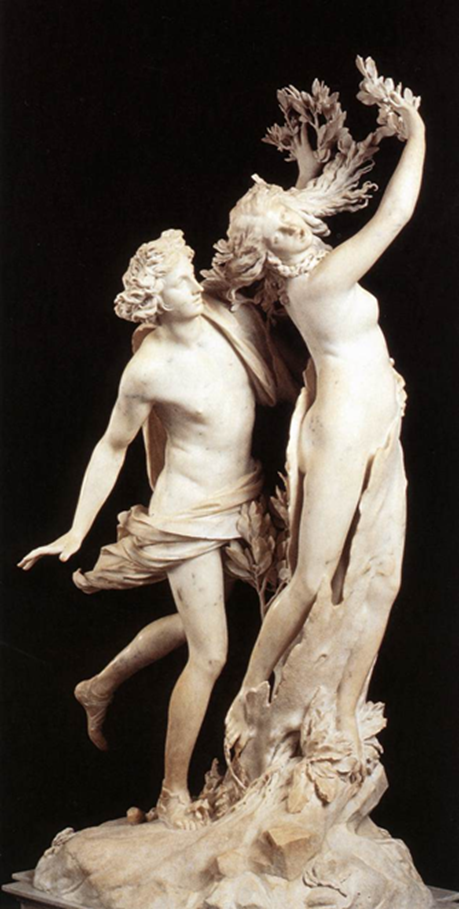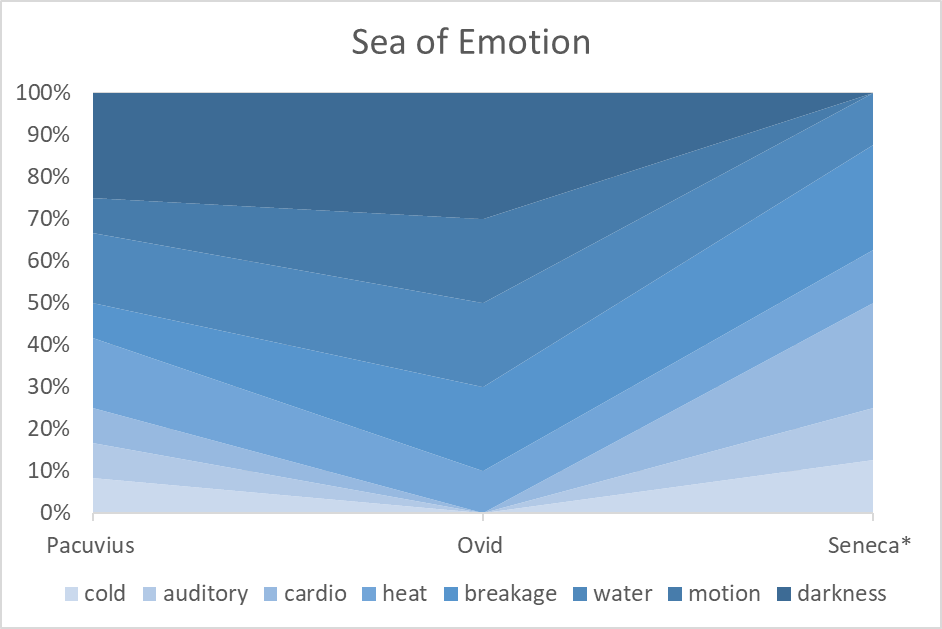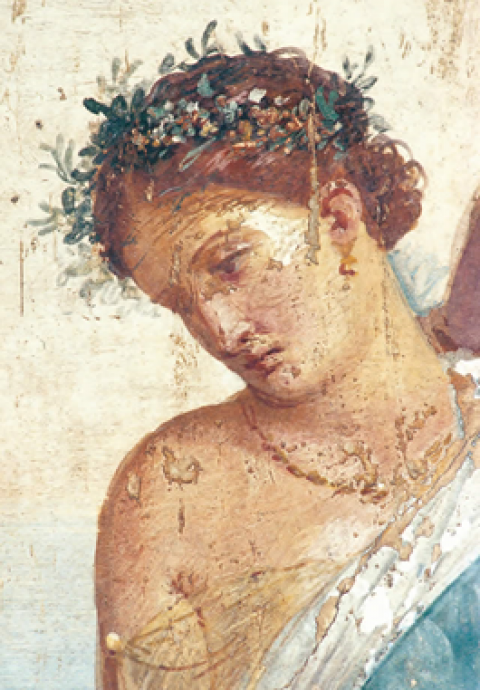Jennifer Devereaux
November 12, 2021
The history of emotion studies
Emotion, generally referred to in the ancient world as pathos (from which we get words like sympathy and empathy), or adfectus (which refers to a state of body and/or mind and from which the word affect derives), is a term of fairly recent vintage. Coined in the mid-16th century, it became the expression of choice in the 19th. These days, it is most generally thought to refer to a strong feeling deriving from one's circumstances, mood, or relationships with others, but there is a long and ongoing debate about the precise nature and function of emotion that stretches back not only to Darwin and James, but also to the ancient world. Aristotle and the Stoics, for example, debated some of the same points that modern proponents of Affect and Appraisal theories of emotion do.
Emotion has been at the core of humanistic study for millennia, and it remains a necessary and appealing topic for historical inquiry—not because the past explains the present, but because analyzing the structure of human experience in the past can help us to denaturalize the present and posit other ways for things to be.
Challenges
Despite the wealth of work done on emotion — or perhaps because of it — writing its history is difficult, not only because all theories of emotion seek to constrain and classify an unbridled and protean part of the human spirit, but also because it is a history that must respond to a number of hard questions.
How do we identify the culturally specific states that are included in the category of emotion? How do we accommodate the fact that the body is configured in social, cognitive, and metaphorical worlds? How do we adequately present the significance of whose body is under discussion in relation to the emotions, their regulation, and their control, when marginalized people are, for a variety of reasons, seen as less able to control their emotions? How do we address assumptions about emotions that uphold existing systems of class and status? And how do we identify the structuring of emotions into specific emotional states as works of power, while not falling prey to the same practices we expose?
My research develops a three-pronged framework within which to address these difficult questions.
Philology and cognitive theory
The first prong is philological. I analyze language through the lens of 4E cognitive theory, which hypothesizes that cognition and thereby language are shaped and structured by dynamic interactions between the brain, the body, and its physical and social environments.
The first “E” refers to embodied cognition, which posits that thoughts, feelings, and behaviors are, in certain respects, dependent upon or influenced by the body beyond the brain. For example, the ancients express the concept of “fear” by referring to the sensation of cold that is caused by blood being diverted away from the skin to the internal organs when one is afraid (blood running cold, frozen with fear, etc.).
The second “E” refers to embedded cognition, which suggests cognition is afforded and constrained by ongoing interactions between the body and its environment. For example, infants are comforted by bodily contact and experience distress in its absence, learning early on that warm is “good” and cold is “bad.”
The third “E” refers to enactive cognition, which proposes that cognitive processes rely on external features of the world rather than internal symbolic representations. We can see in Horace how this aspect of cognition is reflected in symbolic representations (Odes 1.23):
You avoid me like a fawn, Chloe,
searching for its trembling mother in lonely
mountains not without an empty fear
of breezes and the forest.
For whether the arrival of spring quivers
with moving leaves, or the green lizards have
pushed aside the bramble,
the fawn trembles with its heart and knees.
The trembling body of the deer is mirrored by the trembling of the environment, with each working together to express an internal state that is inseparable from the environment causing it.
The fourth “E” refers to extended cognition, which postulates that human cognitive states and processes sometimes spill outside our heads and into objects in our environment. For example, the text of a poem that triggers an episodic memory of time spent in nature is an integrated part of the memory retrieval process.
When all four E's are taken into consideration, we can appreciate that readers see, contemplate, and feel a poem beyond words; they inhabit a place before words were ever formed: they embody a preverbal poem.
A sociological approach to literature
The second prong is sociological. Adapting Pierre Bourdieu’s “theory of practice,” which pursues a means of analyzing the interactions between larger, objective structures of society and the individuals living within them, I suggest that the 4E qualities of ancient narrative enable texts to function as conduits of social norms and values. The texts themselves are both constructive of and constructed by the socially embedded bodies their language contains.
Take, for example, the narratives of Daphne and Echo in Ovid’s Metamorphoses. Daphne, desperate to escape the amorous advances of Apollo, is transformed by her father into a tree. Her transformation, which occurs at the height of her desperation, is described by her feet sticking to the ground and her arms stretching skyward, which captures a particular mental disposition and feeling-state associated with particular bodily movements first learned in infancy.

Figure 1: Apollo and Daphne, by Gian Lorenzo Bernini. c. 1625. Rome, Borghese Gallery.

Figure 2: Image courtesy of Getty images.
When we consider the lack of agency most women had in terms of sex and marriage in the ancient world alongside the influence that Daphne’s bodily experience exerts in the later narration of Echo’s intense desire for Narcissus, a clear view emerges of how it is possible for distinct narratives to work together to re-instantiate and update cultural norms. Echo’s desperate love, like Daphne’s body, adheres and grows upwards.
These movements, expressed by the same words, are understood in terms of bodily memory no less than those of Daphne are, which results in Daphne’s expressed desire to escape affecting the conceptualization of Echo’s desire for Narcissus; this, in turn, triggers a reconceptualization of Daphne’s experience. Intercorporeal sympathies cause aversion to resonate with desire, which demonstrates how bodily movement can help us to understand how the text reinforces norms and values that trace back to the rape of the Sabines.
Historical method
The third prong relates to historical method and involves the redefinition of a term so as to create a stable yet flexible cognitive-sociological method of organizing ever-changing patterns of emotional expression. This term is Joel Fineman’s “historeme,” with which he refers to “the smallest unit of historiographical fact.” Its factuality lies in its realism, not its accurate placement in the narrative. Its status as “real” yet questionably accurate renders it anecdotal.
I offer a redefinition that liberates the historeme from its anecdotal status, identifying it instead as a fundamentally prelinguistic structure that is fully embodied, embedded, enactive, and extended, by virtue of which it carries moral weight, instantiates spontaneous communities defined by experience in common, and effectively produces and reproduces social knowledge.
In arguing for this redefinition, I draw on a wide variety of examples from poetry and prose, ranging from Pacuvius, Horace, and Livy to Seneca, Tacitus, and Apuleius. All genres of texts circulate inseparably, so the history of emotion is everywhere to be found. Using a regular system of analysis enables me to overcome the challenge to historical documentation that the deliberate artifice of literature poses.
My “historemes” are found by locating groups of linguistically connected passages wherein at least one passage pertains to external stimuli, and at least one passage pertains to bodily experience. For example, the description of a love object perceived by a female viewer in an ancient novel runs parallel to the description of the effects of alcohol on the body in a scientific text, which produces the understanding of an emotional state that is unsteady, shaky, restless, and prone to poor judgment. This precise detail differs from traditionally referenced passages that directly address the similarity of emotional experience to the experience of an ailing body; the difference here is significant to our appreciation of the range of emotional experience in the ancient world, not only because emotions are not always experienced or conceived of in the exact same way, but also because the culturally-specific moral attitude attached to drunkenness helps historians of emotion address how ancient assumptions about emotion functioned to uphold existing systems of class and status.
These assumptions, and their reverberations over time — stretching into the modern day — can only be fully addressed by treating emotions less as fixed concepts than as scatterings of conceptually cohesive material (see, e.g., my work in The Routledge Handbook of Classics and Cognitive Theory):

Figure 3: Love as Inebriation graph
When we analyze such material across texts, we can quantify emotional experience and thereby identify the culturally specific states included in the category of emotion; accommodate the fact that the body is configured in social, cognitive, and metaphorical worlds; understand how the experience of emotion gained meaning through imitation and representation; evaluate how the bodies under discussion contribute to generating and reproducing systems of power; and reflect on our embodied position within the transhistorical dialogue in which textual bodies are ever involved.
For reasons that trace back to myth, medicine, and natural philosophy, an important feature of ancient emotional expression relates to the affinities believed to exist between self and nature. Descriptions of the natural world and the phenomena experienced by the body and its senses corresponded to descriptions of the experience of emotion, both physical and mental.
For example, a description of the stormy sea in one passage runs parallel to an unnamed emotion that appears to approximate an amalgam of anxiety and indignation in another passage, fear and anger in a third:

*The authorship of the text is disputed
Each column represents an emotional experience that resembles the others but is entirely unique and lacks a precise signifier. And while the neatly ordered columns appeal to our conditioned way of organizing data, they obscure the true nature of emotional experience and the embodied rhythm through which it flows. An oceanic representation of what the history of emotion looks like is more appropriate:

Emotional expression is not mechanical or computational. It is dynamic, fluvial, and fluctuating. Longinus rightly observed that we cannot possibly know how many emotions there are, but by identifying and connecting the experiences of them that are otherwise lost beneath the waves, my research provides a deeper understanding of emotion within the context of the ancient world.
Value and significance
My research provides a means of breaking down the walls that separate areas of research, interest, and expertise--for, while emotion studies form a unique strand of history, they also inform every historical inquiry. I have validated this claim through designing and teaching courses on nature and technology, demonstrating that my research makes room in the classroom for questions that include (but are not limited to): Do emotion concepts evolve with nature and/or technology, and what is the significance of such evolution? Is distance from emotion and/or the natural world a necessary condition of technological advancement, and if so, what is the value of it? How does the way we think about the natural world affect discourses on gender, ethnicity, intelligence, and mental health? How does technology create social divisions; how does it lessen them; and what is it about human nature that drives these processes?
My research dethrones binaries by demonstrating that biology is not distinct from historical context, practices are not separable from texts, words and bodies are not discrete, mind and body are not separate entities, and emotion and cognition do not exist in isolation. In doing so, it creates new spaces in which to explore the multiple ways in which emotions have played — and continue to play — a role in the unfolding drama of human history and our own lives.
Do you want to write a spotlight on your dissertation or thesis, or want to recommend someone to do one on theirs? Get in touch with the SCS Blog’s Editor-in-Chief, T. H. M. Gellar-Goad!
Header image: Nymph from the Flight of Daedalus fresco, Villa Imperiale.
Authors


